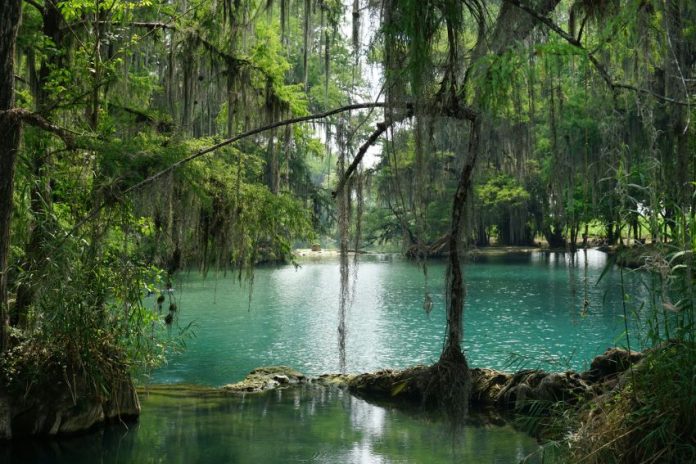If you love hiking and the great outdoors and you happen to find yourself in the city of San Luis Potosí, you’ll have to deal with a difficult problem: deciding which gloriously beautiful natural site you ought to visit first.
This is problematic because the whole state of San Luis Potosí is famed for its breathtaking landscapes, especially when it comes to fantastic waterfalls, rivers and cliffs — not to mention surrealist sculpture gardens.
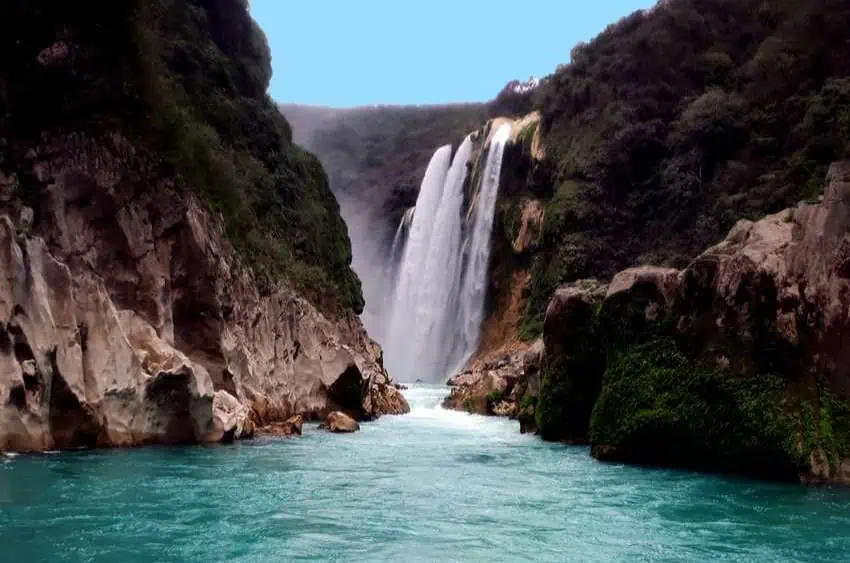
To assist you in making that choice, I have enlisted the help of Lori Jones, a native of San Luis who is also a highly experienced, certified tour guide.
Las Cascadas de Tamasopo: stunningly beautiful
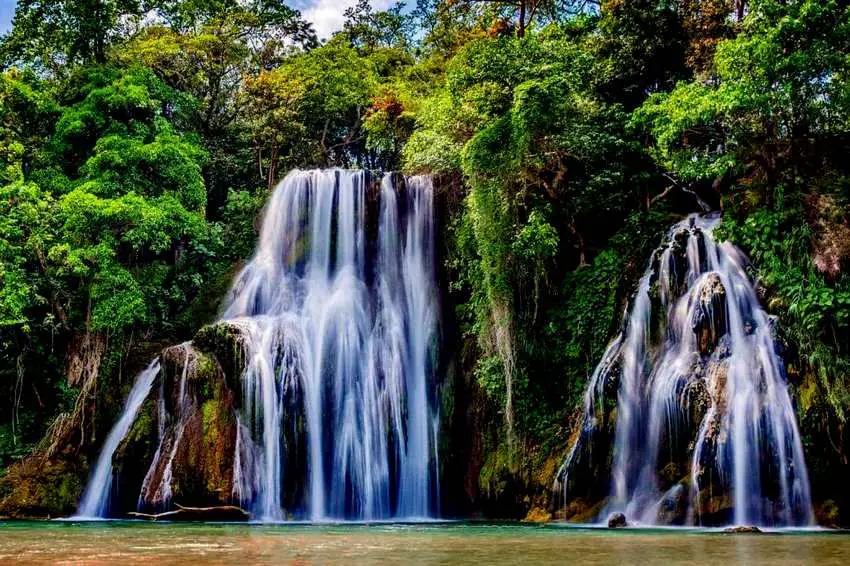
“Of all the places we take people,” Jones told me, “this is my very favorite. The Tamasopo falls lie at the eastern end of the state of San Luis Potosí, in the great, untamed Huasteca Wilderness.”
At Tamasopo you’ll find three stunningly beautiful waterfalls to explore and swim under, along with other small pools and rivers. The place is almost like a water park, but the falls, pools and water slides are natural. In addition, there are jumping platforms and bridges at various heights, plus ropes to swing from.
Just a few kilometers from Tamasopo there is another swimming attraction called Puente de Diós (God’s Bridge), a pool of crystal-clear water that extends into a cave.
“To get to the Puente de Diós,” Jones told me, “you have to walk down 300 steps. The problem is not going down, but climbing back up! Not everyone is in shape for doing this, so I offer an alternative, a nearby place called Cascaditas where we can stroll alongside the river, which is full of lovely little waterfalls. It’s a leisurely walk where you can stop and go into the pools and falls, and the area is relatively flat, so you don’t have to negotiate any steps. About 50 percent of the people I take there prefer this option.”
The Tamasopo area is a three-hour drive from San Luis, making for a full day’s activity.
Hike to Wirikuta, the Wixárikas’ sacred mountain
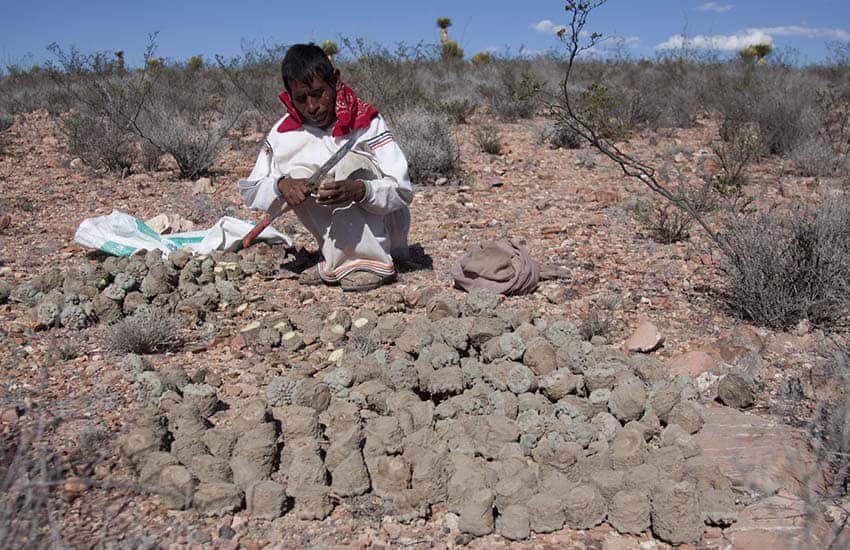
This is a 15-kilometer hike from the unique old mining town of Real de Catorce to the Cerro del Quemado, also known as Wirikuta, one of the five sacred places of the Wixárika (Huichol) people. According to Wixárika cosmology, this is the place where the world was created. Today it is protected as a UNESCO Natural Sacred Area.
“This hike,” says Jones, “takes two and a half hours or three, depending on how fast you walk—because here you are hiking at an altitude of 2,700 meters (nearly 9000 feet) so most people have to walk very slowly. On top of the mountain you can see concentric circles of stone where the Wixárika do a cleansing, coming-of-age ceremony for their young men each year. This is a tough hike and you can choose to do it on your own two feet or on horseback. Personally, I do it on horseback.”
Other excursions from Real de Catorce include a hike or horseback ride to El Pueblo Fantásma. “It’s not really a ghost town,” says Jones, “but the picturesque ruins of an important silver mine. It’s at an altitude of 3000 meters, which is nearly 10,000 feet high.”
Row upriver to the Tamul Falls
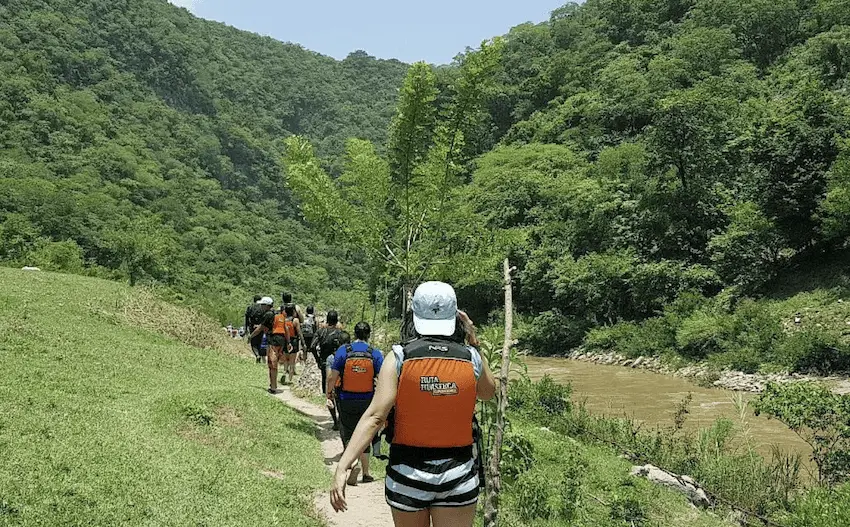
“The Cascada de Tamul is a four-and-a-half-hour drive from town,” says Jones, “so we start out early. We stop for breakfast at 7:00 at a place in Río Verde famed for its gorditas. So we reach the river around 11 a.m. and we paddle up to the Tamul waterfall, which is an impressive 105 meters high and 300 wide. You have to row against the current for about maybe one hour or more—It’s not so easy. Everybody helps to paddle, otherwise we can’t make it all the way to the waterfall!”
Paddling gets you to within 50 meters of the waterfall. “From there,” says Jones, “you can take pictures and swim. The other day I took some people from Poland to this place and when we arrived there we found only some Germans, nobody else. So, going on a weekday has big advantages: we practically had the place to ourselves and everyone went swimming. Then, on the way back, we stopped and walked up a mountainside to a place they call La Cueva Del Agua and here you can swim inside the cave.”
The mezcal and pulque route

“For a change of pace,” Jones told me, “I suggest a special visit we organize to give people a first-hand look at how mezcal and pulque are produced. For this we head for the municipality of Mexquitic, located just a half-hour drive from San Luis.”
Mexquitic is famed for its “high-desert mezcal,” made from the salmiana agave, said to suggest “the taste of fresh green chili, vibrant grapefruit peel and agave after a rainfall.” The process for making it has been a family secret going back 200 years.
“Beside touring this venerable distillery,” said Jones, “we also visit the family of Señora Flor and we join her in collecting aguamiel, which is very sweet and good to drink. The aguamiel is then fermented to produce pulque, which is — and has been for hundreds of years — a traditional drink for the people who work in the fields, who say it gives you lots of energy. At Señora Flor’s house we have an opportunity to taste fine pulque and to discover why it is so popular.”
The Garden of Surrealist Cultures
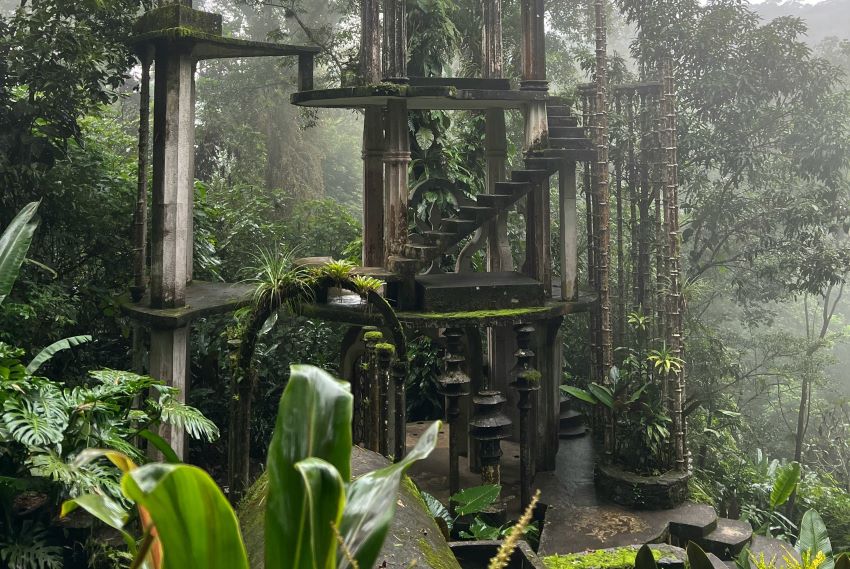
Las Pozas, Edward James’ unique “garden” in Xilitla might not seem to fit into a list of hikes, but, says Lori Jones, “Lots of walking is required to see it, because you have to go up and down many paths and staircases, spread around 37 hectares of subtropical rainforest.”
“Note that these are not sculptures, but structures,” Jones says. “There is one called ‘the house that looks like it has five floors but only has three.’ And then there is ‘the house that looks like it has three floors but actually has five.’ San Luis Potosí is filled with fascinating places to visit, but Xilitla is in a class all its own.”
John Pint has lived near Guadalajara, Jalisco, for more than 30 years and is the author of A Guide to West Mexico’s Guachimontones and Surrounding Area and co-author of Outdoors in Western Mexico. More of his writing can be found on his website.
